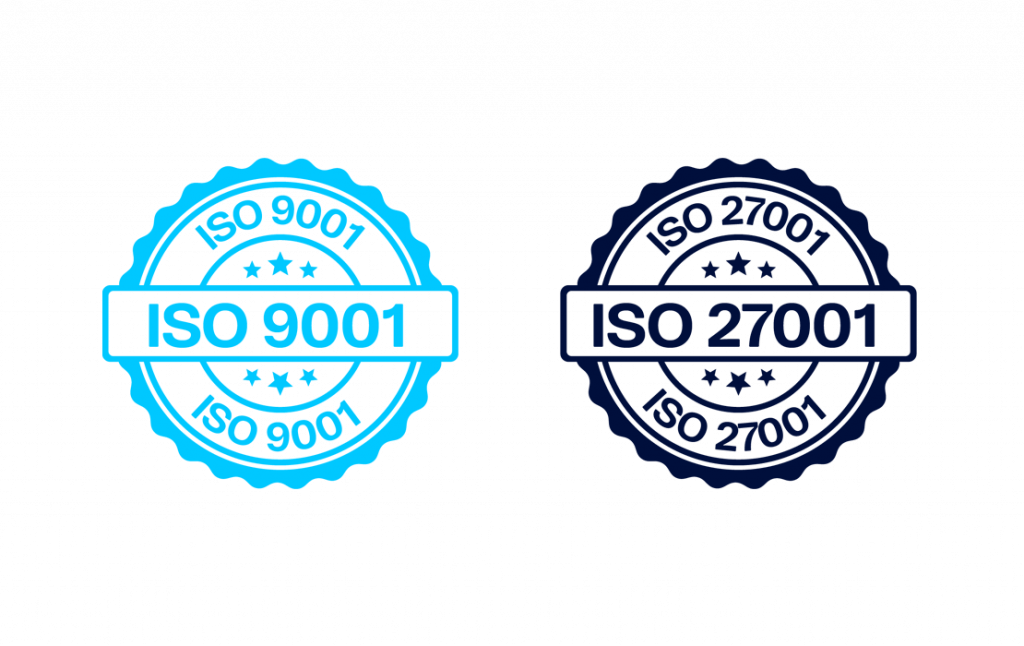The Connected Car Revolution:
Why Europe Must Act as One
September 23, 2025
When I think back to the first car I owned, it was all about the horsepower, the design, and the freedom of the open road. Fast forward to today, and the picture could not be more different. Cars are no longer just machines that take us from A to B. They are becoming software-defined communication platforms, deeply integrated into our digital lives.
And this transformation is happening faster than most of us realize. Electrification, digitalization, and new user habits are reshaping not just the car itself, but the entire business model behind it.
From Horsepower to Cloud Power
The automotive industry is undergoing one of the most profound shifts in its 100-year history. What was once a mechanical product assembled on production lines and delivered to a passive buyer is now evolving into a dynamic, software-defined platform.
For customers, the expectations have changed dramatically. Nearly half of buyers today say they would not even consider a car without seamless smartphone integration. More than half of EV owners globally are willing to switch brands for better connectivity. In China, where digital lifestyles are even more ingrained, the demand for streaming, gaming, and connected services is already a deciding factor when choosing a brand.
The race is no longer fought under the hood — it is happening in the cloud. And the winners will be those who can deliver reliable, secure, and globally scalable connectivity — every time, everywhere.
Looking ahead: Where is the connected car industry going?
IoT Predictions 2025: The Connected Car Guides the Way
Your Car: The Next Communication Hub
When connectivity moves into the cabin, the car becomes something entirely new: an extension of our digital life. It’s where we stream, game, or work remotely while charging. It’s where real-time data enables predictive maintenance and software updates “over the air.” It’s where safety features rely on constant communication between the vehicle, the infrastructure, and the manufacturer.
For automakers, this opens new business models. Instead of revenue ending at the point of sale, they can build recurring income streams through subscriptions, bundled service packages, and partnerships with content providers. And consumer studies are clear: customers are willing to pay, but only if the experience is seamless and simple.
The flip side? When connectivity fails, it damages trust immediately. Today, infotainment accounts for a quarter of all customer complaints in the industry. Years of brand-building can be undone in minutes if a system is glitchy or unexpectedly expensive.
At Telenor IoT we have seen this for some years: connectivity is no longer a “nice to have.” It is the nervous system of the car. Without a robust and secure digital backbone, the new business model of the automotive industry simply does not work.
Safety Is the New Battleground
Connectivity brings new possibilities, but also new risks. Cyberattacks targeting IoT are on the rise. Many of us remember the Mirai botnet that hijacked millions of connected devices, or the ransomware attack that shut down Norsk Hydro’s factories. And when researchers remotely took control of a Jeep Cherokee’s steering and brakes on a highway, it was a chilling reminder: cybersecurity in cars is not theoretical. It’s about safety. It’s about lives.
This is why new regulations are emerging, from UNECE vehicle cybersecurity requirements to the EU’s Cyber Resilience Act. From August 2025, CE marking will no longer just signal product safety, it will also be proof of built-in cybersecurity.
Security can no longer be bolted on afterwards. “Security by design” must be the standard. Because without trust, there is no adoption. And without adoption, there is no business.
Resilience: Europe’s Hidden Advantage (If We Get It Right)
Connectivity is not only transforming the car — it is reshaping Europe’s technological future. The EU has set itself an ambitious goal: to reduce dependency on foreign providers, build competitiveness, and strengthen resilience. And resilience must be at the heart of this strategy.
Resilience is tested every single day. Attacks happen. Systems fail. Rules shift. In this race, speed and adaptability matter. But resilience cannot be built in silos. If every member state acts individually, we end up with fragmentation. And fragmentation slows us down at the very moment we need to move faster and scale bigger.
If Europe acts as one, it can lead. If not, it risks falling behind. This is why connected industries, and especially automotive, are at the center of the debate on Europe’s technological sovereignty.
The value-add by European OEMs is projected to range between €100–€330 billion by 2035, depending on the market scenario.”
PwC Strategy – The Software-Defined Vehicle (2023)
Rules, Rules, Rules — When Regulation Builds Barriers
Europe has recognized the risks, and it has acted. NIS2, the Cyber Resilience Act, and the RED Delegated Acts all put resilience and cybersecurity at the center. This is necessary and welcome. But here is the catch: new rules do not arrive in a vacuum. Each one is layered on top of existing frameworks, and the pile keeps growing.
For automakers, this means that compliance is no longer a box to tick. It is a constant discipline. Teams must spend enormous energy just understanding the obligations, adjusting product designs, and ensuring every launch is compliant. Too often, this energy comes at the expense of innovation and competitiveness.
The intention behind regulation is right. But if complexity grows unchecked, the risk is that Europe builds not resilience, but barriers.
Need clarity on Europe’s complex connectivity rules?
Navigating Europe’s Regulatory Maze: A White Paper for Automotive OEMs
Fragmentation — A Roadblock to Innovation
Take the European Electronic Communications Code (EECC). It was designed to harmonize connectivity rules across the EUone rulebook to scale services across all markets. The idea was excellent. In practice, it turned out differently.
Member states follow the same rulebook but apply it in different ways. One country may require new registrations, tax filings, or even police certificates, while another does not. Some demand SIM registration tied to a verified user; others don’t. Data retention rules vary from months in one country to years in another.
For connected cars, even small differences force redesigns and delays. It’s like driving through Europe: there is a speed limit everywhere, but the signs differ, and in one country you suddenly discover headlights must be a different color. That one detail reshapes your entire design.
The lesson is clear: rulebooks are only useful if they are truly common. Otherwise, Europe’s fragmentation risks stalling the very innovation it seeks to promote.
CE Mark 2.0: From Reacting to Preventing
Managing connectivity regulation is already complex enough. Now cybersecurity adds another layer. Under the RED Delegated Act, CE marking will from August 2025 no longer be a simple proof of safety and market access. It will also be a declaration of cybersecurity readiness. And on the horizon is the Cyber Resilience Act.
More than just another rule, it is a call to shift our mindset: from reacting to attacks to preventing them before they happen. It asks us to embrace security by design. To raise the bar for how we protect people. To build trust into products from the very beginning.
If implemented wisely, this wave of cybersecurity regulation can become the framework that unites Europe’s digital market. If not, it risks repeating the mistakes of fragmentation.
Compliance Is No Longer Paperwork — It’s Strategy
Compliance is no longer just about “passing the test.” It now touches every part of the connected ecosystem: the network, the device, the software, the updates. It is a constantly shifting process, where rules overlap, sometimes conflict, and always demand attention.
The danger is obvious: too much corporate energy spent navigating regulation instead of creating new experiences for customers. But there is also an opportunity. If we make regulation a strength, if we integrate compliance into design and strategy from the start, then resilience becomes a competitive advantage rather than a burden.
How We See It at Telenor IoT
Over the years, we at Telenor IoT have watched the complexity in this space build up layer by layer. What started as connectivity challenges has grown into a landscape where regulation, security, and business models are deeply intertwined. And we have come to a simple conclusion: no automaker should have to carry this burden alone.
With so much complexity, you cannot treat connectivity and regulation as two separate issues. They must be combined, integrated, if you want solutions that truly work in practice. That is why we have built deep expertise not just in connectivity, but also in the regulatory frameworks that shape it.
Our launch of IoT Drive came directly from conversations with car manufacturers. They told us what they needed: secure connectivity that also takes regulatory compliance seriously, without slowing down innovation. We listened, and we built a service that reflects those needs — combining safety, scalability, and compliance into one foundation.
This is not about selling a product. It is about building trust. Our role is to clear the road so that our customers can focus on what matters most: creating cars and mobility experiences that people love, and that society can rely on.
The Road Ahead for a Seamless Future
No company can solve these challenges alone. Automakers, telecom providers, regulators, and technology companies must collaborate if we are to make the car the communication hub that consumers, and society, now expect.
The car of the future is not just a vehicle. It is a platform for services, a source of data, and a fully integrated part of our digital ecosystem. To realize that vision, we need three things: security, seamlessness, and scale. But above all, we need a common direction.
We are ready to take that journey together with the industry. The real question is: is Europe ready to act as one and build the ecosystem that can make us leaders in the digital era?
And if I may end on a personal note: I am genuinely excited about this journey. Because at the heart of it, this is not just about cars. It’s about people. It’s about creating mobility that is safer, smarter, and more human.

A Perspective from Our CEO
Mats Lundquist
CEO, Telenor Connexion & Head of Telenor IoT
Mats Lundquist leads Telenor’s global IoT business, responsible for the company’s IoT portfolio and sales worldwide. With over 20 years in IT and telecom, he has held senior leadership roles across Telenor and beyond, and since 2015 has been CEO of Telenor Connexion, Telenor Group’s international IoT company.
Get a Free Consultation




